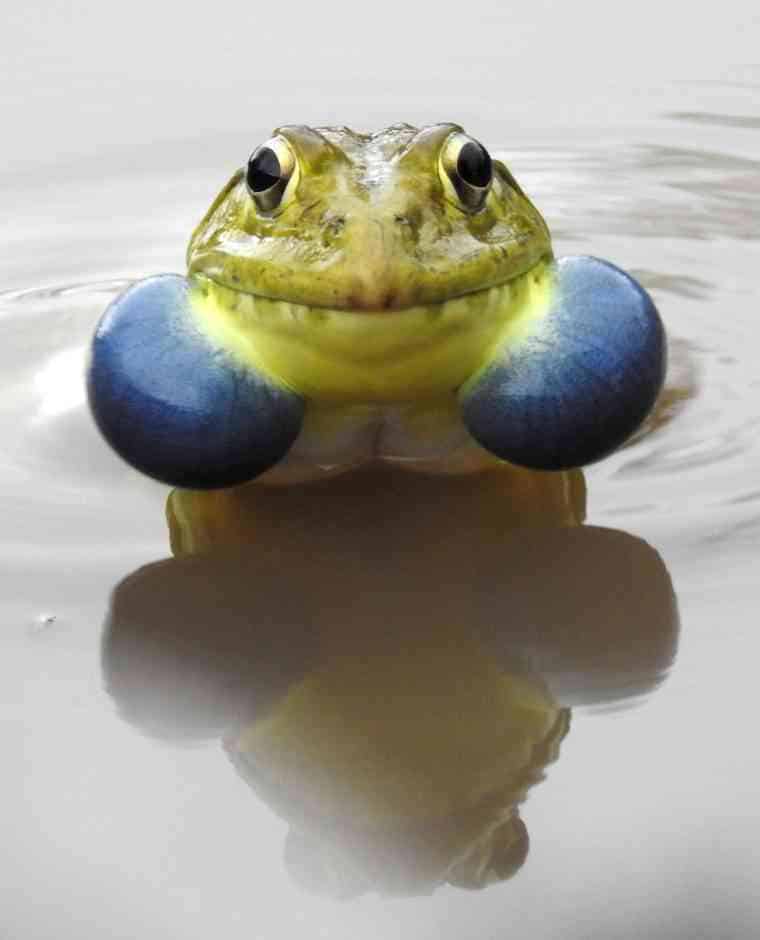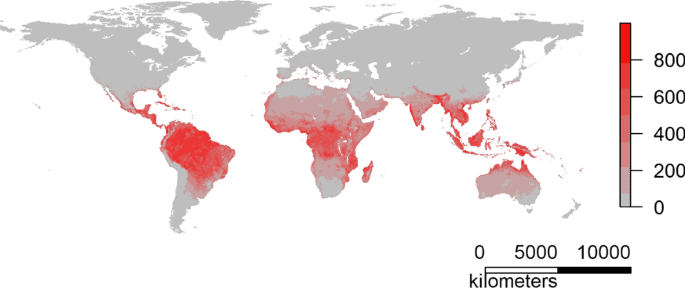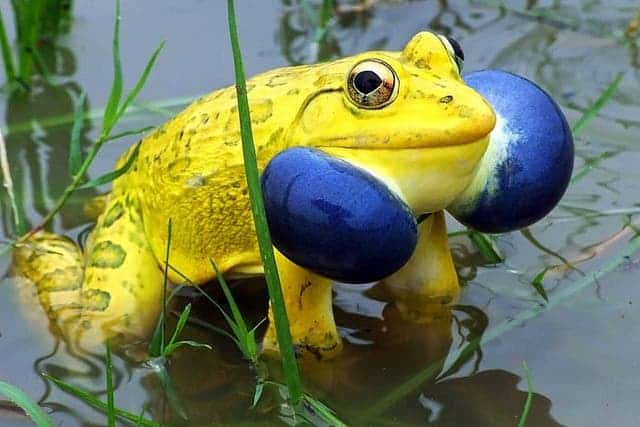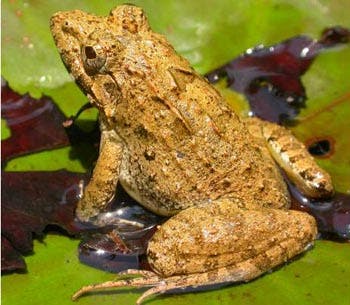The Indian bullfrog, scientifically known as Hoplobatrachus tigerinus, is an amphibian synonymous with the South Asian monsoon season. With the arrival of these life-giving rains, these frogs emerge from their hidden burrows in a vibrant display of nature’s color palette.
Metamorphosis: from dull brown to bright gold
The Indian Bullfrog may not look like much, but its appearance can change dramatically. During most of the year, both genders are drabbed in a rather dull kaki-olive-green, but during the mating season things change drastically: males put on their good suits to impress the ladies!
The males’ skin turns a vibrant yellow, except for the vocal sacks, which turn a bright blue. It’s not exactly clear how this works, but it’s believed that the brighter the color, the more attractive the male is.
Of course, this comes at a cost: they now also stand out from predators. A small price to pay for love, perhaps.
A song in the rain
Our bullfrog doesn’t rely on color alone to woo a mate. As the first rains hit the parched soil, males congregate around water bodies, inflating their bright blue vocal sacs to bellow deep, resonant calls into the night.
These calls, each as unique as a human fingerprint, attract female bullfrogs, who respond by heading towards the most alluring serenades.
The louder and more resonant the call, the better the chances of securing a mate. In the world of the Indian bullfrog, it seems, the voice truly does make the frog.
After the mating spectacle ends and the monsoons retreat, our golden protagonist returns to a quieter, less conspicuous life. It reverts back to its non-breeding colors and resumes its solitary lifestyle, roaming waterways under the cover of darkness.
Indian Bullfrog diet: a voracious eater
One defining characteristic of the Indian bullfrog is its voracious appetite. It is known to be an opportunistic feeder, devouring anything that fits in its mouth, from various insects and invertebrates to smaller amphibians and even its own kind!
This eating habit plays a crucial role in controlling the populations of pests, especially mosquitoes, contributing to the balance of the ecosystem.
But in other places where it should have no business, the bullfrog itself is a pest.
Indian Bullfrog habitat: an invasive species

Native to the Indian subcontinent, this amphibian has made its presence felt far beyond its home range, leaping across geographical boundaries and thriving in diverse habitats. And this can be a huge problem.
In recent years, Indian bullfrogs have hitched rides with human trade and transportation, unintentionally being introduced into regions beyond their native range. On the Andaman Islands and parts of the Middle East, these introduced populations of Indian bullfrogs have started to disrupt local ecosystems.
Today, this frog inhabits the wetlands of South and South East Asia. You can find it around holes and bushes near permanent waters. But these frogs have their sights on other regions of the world.
In these new environments, they become the apex predator among amphibians, voraciously consuming local species and out-competing native fauna for resources.

Researchers at Stellenbosch University in South Africa found the Indian Bullfrog has successfully invaded the Andaman archipelago in the northeastern Indian Ocean and Madagascar. The researchers found that the bullfrogs quickly replaced native species. The study also predicts that tropical regions of the world are climatically suitable for the species, indicating a potential for further invasions.
“Unless managed effectively, invasive populations of the Indian bullfrog are likely to spread to the Nicobar Islands, which are currently uncolonised by the bullfrog, and expand in new locations of the Andaman Islands,” said Nitya Mohanty, lead author of the study and post-doctoral fellow at Stellenbosch University, South Africa.
This unexpected invasion raises concerns about biodiversity loss and highlights the unforeseen impacts of human activity on the natural world.
The Icon of monsoons
The Indian bullfrog, with its vibrant breeding display and all-consuming appetite, is truly an icon of the monsoon season in South Asia.
As we grapple with the challenges of preserving biodiversity and mitigating the impacts of human activities, it’s vital to appreciate and understand the intricate roles species like the Indian bullfrog play in the web of life.
Their story serves as a timely reminder of the delicate balance of nature and our role in preserving it.




